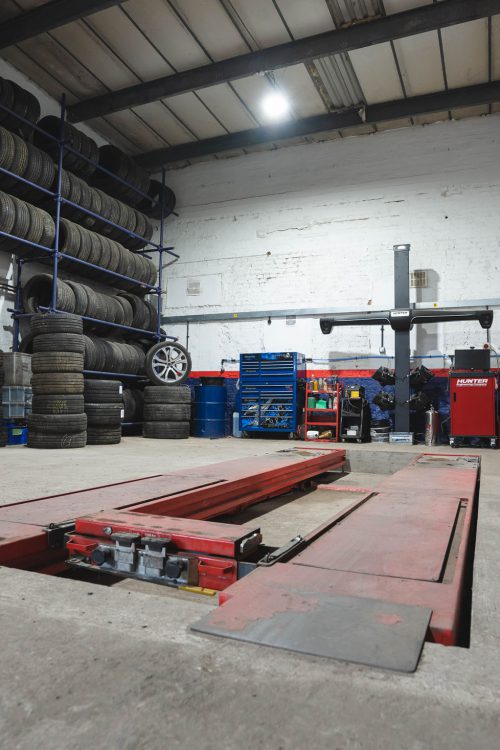

Wheel Alignment
If you notice that your car is pulling slightly to one side while you’re driving, or that your tyres are wearing unevenly or faster than expected, it might be that your wheel alignment – also known as wheel tracking – is off and needs attention.
It is also recommended that you should have your wheel alignment checked any time you have new tyres fitted, have changed the wheels, changed the tyre size, if you have knowingly hit a pothole or a kerb and if any suspension components have been replaced.
Why Is Wheel Alignment Important?
Improved Handling
Handling problems can be corrected with four-wheel alignment, such as the vehicle pulling to the left or right, heavy steering or trouble re-centring after you make a turn.
Improved fuel economy
Wheels failing to run in the correct alignment are effectively being dragged across the road’s surface, resulting in a detrimental effect on the vehicle’s fuel economy.
Reduced tyre wear
Unaligned wheels are a major cause of premature tyre wear, this could cost you hundreds or possibly thousands of miles to the life of your tyres, meaning they won’t last half as long as they should.
This all means that having your wheels aligned will make your car safer, cheaper and easier to drive!
What Are The Components That Account For A Wheel Alignment?
There are a number of angles related to your wheels that need to be checked when determining if they are in alignment or not. These are:
Toe
This refers to the angle at which the front and rear wheels are set as seen from a bird’s-eye view. This angle affects how easily a vehicle can move forward in a straight line. When the front tyres are angling towards each other, it is known as a ‘toe-in alignment’; when facing outwards, it is referred to as ‘toe-out alignment’. If you notice either of these, bring your car to our workshop immediately to get it fixed.
Caster
This is the angle at which the wheel is poised in the wheel arch, determining the stability and control of the car. If it is inclining towards the driver, it is a positive caster; if it is angled away from the driver, it is a negative caster. To get the best performance and stability, it should be repositioned to the factory set angle.
Camber
This refers to the angle at which the tyres are tilted. A tilt in the inward direction is a negative camber; an outward tilt is a positive camber. In either case, this can lead to uneven wear and tear of your tyres.
Our expert technicians will check these angles using the latest Hunter 4 Wheel Alignment machine and fix any issues hindering the balance of the car.
Hunter 4 Wheel Alignment
Hunter 4 Wheel Alignment equipment is widely recognised as being the most reliable and accurate system. It uses imaging sensors to measure 14 alignment angles and then compares the results to its regularly updated database that contains the specifications for thousands of makes and models. Once any necessary adjustments have been completed, it produces a clear printed report that tells the customer what has been adjusted.
At UK Tyres, we offer a FREE wheel alignment check. So whatever the make or model of your vehicle, we can quickly determine if you have a problem and ensure that it is swiftly corrected. Whether you require front wheel alignment, rear wheel alignment or four wheel alignment, we’re here to help.
If you’re worried about how much wheel alignment costs, be assured that it is a relatively inexpensive service but one that could make a considerable difference to your safety on the road. By carrying out a comprehensive wheel alignment service to the highest standards, we can ensure your vehicle will drive as it should.
Find out more about Hunter 4 Wheel Alignment from UK Tyres or book your appointment by getting in touch with our expert team today – we have depots located in North and West London, both of which have the latest Hunter Alignment Machines.
























